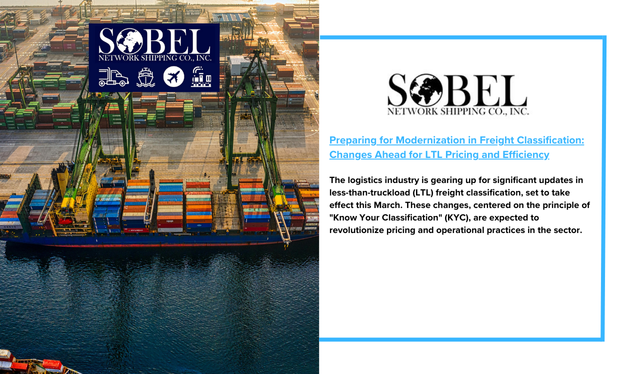The logistics industry is gearing up for significant updates in less-than-truckload (LTL) freight classification, set to take effect this March. These changes, centered on the principle of “Know Your Classification” (KYC), are expected to revolutionize pricing and operational practices in the sector.
The Push for Modernization
The primary goal behind these updates is to modernize the freight classification system, fostering collaboration between shippers and carriers to reduce costs and improve efficiency. This transition represents one of the most significant changes in LTL pricing since the industry’s deregulation.
Previously, freight pricing heavily relied on weight. Moving forward, factors like dimensions and distance will play a critical role in determining costs. This shift encourages strategic partnerships over purely transactional relationships, allowing carriers and shippers to optimize operations and reduce waste.
Impact on Shippers and Carriers
The first phase of these updates will reclassify approximately 30% of all LTL freight, affecting carriers, shippers, and third-party logistics providers (3PLs). While some shippers may see opportunities to streamline operations and negotiate better deals, others may face increased costs.
Key areas of focus include:
- Eliminating Waste: Carriers are encouraging shippers to optimize packaging and pallet configurations to minimize inefficiencies.
- Adopting Technology: Investing in dimensioning equipment, which provides precise freight measurements, is expected to become standard practice.
- Improving Collaboration: The changes aim to strengthen partnerships between shippers and carriers, emphasizing mutual benefits and operational improvements.
Embracing Density-Based Pricing
One of the most transformative aspects of the new system is the emphasis on density-based pricing. Historically, freight classification relied on a combination of density, handling, stowability, and liability. However, advancements in technology now allow carriers to measure the exact density of shipments, moving away from averages and creating more accurate and fair pricing models.
For shippers unfamiliar with density-based pricing, education and adaptation will be essential to navigating these changes effectively.
Phased Implementation for a Smooth Transition
The National Motor Freight Traffic Association (NMFTA) is implementing these updates gradually to minimize disruption. The first phase, starting in March, includes:
- A standardized density scale for LTL freight without special handling requirements.
- Unique identifiers for shipments with specific handling, stowability, or liability needs.
- Streamlined commodity listings for improved usability.
- Enhancements to tools like the ClassIT classification system.
These adjustments aim to streamline workflows, improve communication, and increase satisfaction across the logistics industry.
What Lies Ahead
As the industry adapts to these updates, shippers must rethink their interactions with carriers, aligning operational practices with the new classification standards. While the transition may present challenges, the long-term benefits of reduced waste, improved efficiency, and stronger partnerships are clear.
The modernization of freight classification marks a pivotal moment in LTL logistics. By embracing these changes, the industry can drive innovation and set new standards for efficiency and collaboration.


